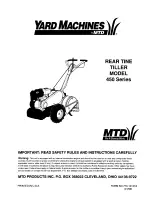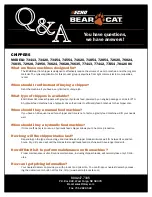
9 - NOMINAL SYSTEM WATER FLOW CONTROL
Water flow control procedure
Once the circuit is cleaned, read the flow value on the user
interface and compare it to the theoretical selection value.
If the flow rate read is greater than the specified value, this
indicates that the overall pressure drop in the system is too low
compared to the available static pressure generated by the pump.
In this case, close the control valve (item 22) and read the new
flow rate value.
Repeat as necessary, closing the control valve (item 22) until
the system's specific pressure drop corresponding to the unit's
design flow rate is achieved.
NOTE:
If the network has an excessive pressure drop in relation to the
available static pressure delivered by the unit pump, the nominal
water flow rate cannot be obtained (lower resulting flow rate) and
the difference in temperature between the water inlet and outlet
of the water type heat exchanger will be increased
To reduce the system's hydraulic network pressure drop:
-
Reduce the pressure drops of individual components (bends,
level changes, options, etc.) as much as possible;
-
Use the correct pipe diameter;
-
Do not extend the hydronic systems
Example:
Unit with specified nominal flow rate of 10.6 l/s
Water flow rate, l/s
Pressure drop, kPa
Legend
1 Unit pump curve
2 Pressure drop in the hydronic kit (to be measured on the pressure gauge
installed on the water inlet and outlet)
3 Pressure drop in the system with wide open control valve
4 Pressure drop in the system after controlling the valve to obtain the nominal
flow specified.
9.3 - Units with hydronic module and
variable speed pump – Pressure differential
control
The system flow rate has not been set to a nominal value.
The flow rate will be adjusted, by varying the pump speed, to
maintain a system pressure differential value defined by the user.
This is checked by the pressure sensor at the water exchanger
outlet (item 10 on the main water circuit diagram).
The system calculates the measured pressure difference,
compares it with the setpoint value set by the user and then
modulates the pump speed module, resulting in:
-
an increase in the flow rate if the measurement is below the
setpoint,
-
a decrease in the flow rate if the measurement exceeds the
setpoint.
This modulation is limited only by the maximum and minimum
flow rates for the unit and by the maximum and minimum
allowable pump speeds.
The maintained pressure difference value may, in certain cases,
differ from the setpoint value:
-
if the setpoint value is too high (obtained for a flow rate higher
than the maximum value or a frequency greater than the
maximum value), the system will stop once it reaches the
maximum flow rate or maximum frequency, which will result
in a pressure difference below the setpoint,
-
if the setpoint value is too low (obtained for a flow rate lower
than the minimum value or a frequency less than the minimum
value), the system will stop once it reaches the minimum flow
rate or minimum frequency, which will result in a pressure
difference greater than the setpoint.
Contact the manufacturer's service department to implement the
procedures described below.
Hydraulic circuit cleaning procedure
Before proceeding, it is advisable to remove any possible
contamination from the water circuit.
-
Start-up the system pump by using the forced start command.
-
Control the frequency to the maximum value to generate a
higher flow.
-
If there is a ‘‘Maximum flow exceeded’’ alarm, reduce the
frequency until an acceptable value is reached.
-
Read the value of the flow on the user interface.
-
Let the pump run for 2 hours continuously to clean up the
system's hydraulic circuit (presence of contaminating solids).
-
Perform another reading of the flow and compare this value
with the initial value. A decrease in the flow value indicates
that the filters in the system need to be removed and cleaned.
In this case, close the shut-off valves on the water inlet and
outlet (item 19) and remove the filters (items 20 and 1) after
draining the hydronic part of the unit (items 6).
-
Remove the air from the circuit (items 5 and 17).
-
Repeat until all fouling is removed from the filter
Procedure for controlling the pressure differential
setpoint
Once the circuit is cleaned, place the water circuit in the
configuration for which the unit selection was performed
(generally, this will be all valves open and all cooling coils active)
Read the value of the flow on the user interface and compare it
with the theoretical value of the range:
-
If the flow rate read is greater than the preset value, reduce
the pressure differential setpoint on the user interface to
reduce the flow rate value;
-
If the value read is lower than the preset value, increase the
pressure differential setpoint on the user interface to increase
the flow rate value
Repeat until the unit's nominal flow rate at the required operation
point is achieved.
Stop the forced operation of the pump and proceed to the
configuration of the unit for the required control mode. Modify
the control parameters:
-
Set water flow control to ‘pressure differential’
-
Set the value of the required pressure differential.
The unit's default factory configuration is the minimum speed
(frequency: 30 Hz).
NOTE:
If during adjustment, the low or high frequency limits are reached
before reaching the specified flow rate, keep the pressure
differential value at its lower or higher limit as the control
parameter value.
If the user knows in advance the pressure differential value at
the unit outlet to be maintained, this value can be entered directly
as data to be declared. You should not, however, omit the water
circuit cleaning sequence
EN-37
AQUACIAT
POWER
ILD
















































